Story and photos by Jonathan Reitz
“You want to do what, son?” a rancher recently questioned me after I had asked him for permission to dig up cholla cactus on his property. He couldn’t understand why someone would want to transplant cactus into perfectly good and cactus-free shortgrass rangeland. To most folks, such behavior seems outrageous, but not to most wildlife biologists in southeast Colorado.
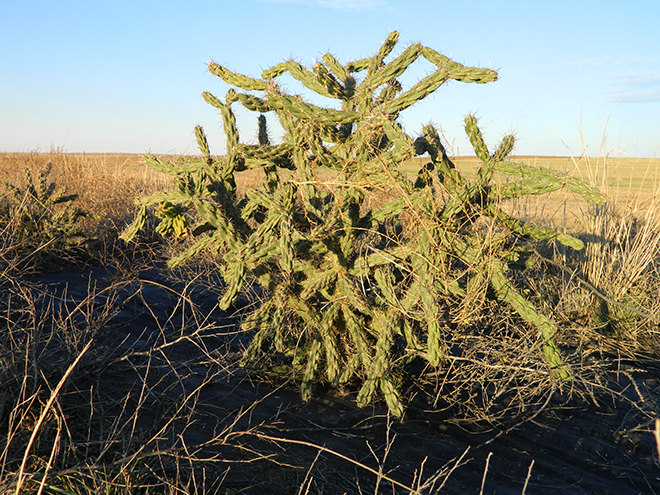
Southeast Colorado is blessed to have both bobwhite and scaled quail call it home. There is a lot going for quail in this relatively arid and flat portion of Colorado. We have vast tracts of shortgrass prairie, sand-sage prairie, and CRP with some irrigated and dryland farm ground thrown in.
If Mother Nature has been good to us by giving us some timely precipitation, these landscapes offer most of what a bobwhite or scaled quail would need; with plenty of seed-producing forbs, screening cover, bare ground, and invertebrates.
There is one habitat component that is in short supply here though: woody cover.
Anyone who has spent much time hunting quail knows that quail need big woody cover or some kind of surrogate to loaf in between feeding sessions. The “loafing coverts” as they are commonly called, provide a place where an entire covey can socialize, dust, nap, and digest the food in their crops while being protected from raptors flying above.
These loafing coverts also help with thermoregulation by providing shade and cooler temperatures when it’s hot, and wind blockage and warmer temperatures when it’s cold.
Across much of the country’s bobwhite and scaled quail range, wildlife managers are fighting against woody cover, trying to knock back brush in a battle to maintain sufficient grassland nesting cover and early successional habitat.
We‘re fighting a very different fight on the Colorado plains, where we battle to get woody cover established in an area with a climate that doesn’t favor large shrubs.
Our struggle occurs on three very distinctive fronts: 1.sand-sage rangeland, 2. CRP/farmland interface, and 3. shortgrass rangelands.
Our sand-sage country offers both species of quail most of the elements that make up good habitat. The sandy soils are easily disturbed by wind and by cattle hoof, and consequently produce plenty of annual forbs that provide insects and seed. The soils also naturally maintain sufficient amounts of bare ground for ease of travel. The sand-sage itself offers good nesting cover and screening cover.
The problem over most of our sand-sage country is that loafing coverts are far and few between, often being found miles apart.
Over recent years, the Lamar Rebel Roosters and Baca County PF chapters, PF & QF biologists, Colorado Parks and Wildlife personnel, and US Forest Service personnel have been establishing woody cover out in the sage brush by planting root stock sand plum and skunkbush sumac seedlings within grazing exclosures.
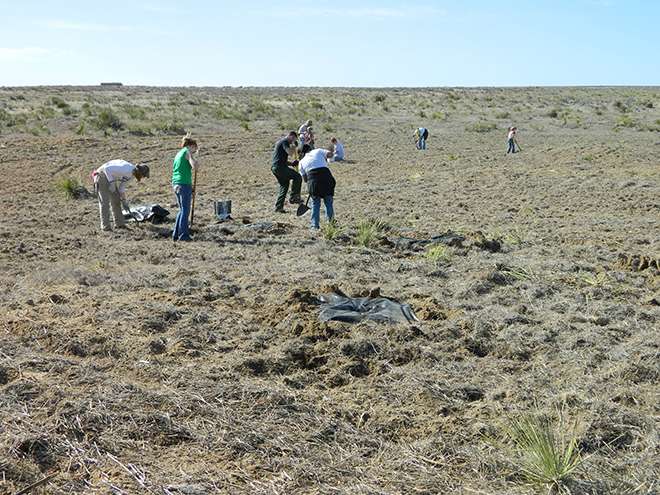
These shrub plantings may be as small as 1/10
th of an acre or as large as 40 acres. The treatment area is first disked or roto tilled. Disking helps by removing most of the perennial competition in the treatment area and by clearing the vegetation off so that weed fabric can be laid down.
The shrubs and weed fabric are applied using two different techniques. In some cases, tree planters and weed barrier machines are pulled behind tractors to put down multiple straight rows of fabric and shrubs, which will eventually form a shrub thicket.
In other instances we will hand plant the shrubs in scattered plantings in 10-30 plant clusters, with each plant being between 10’ and 40’ from the nearest shrubs within the cluster.
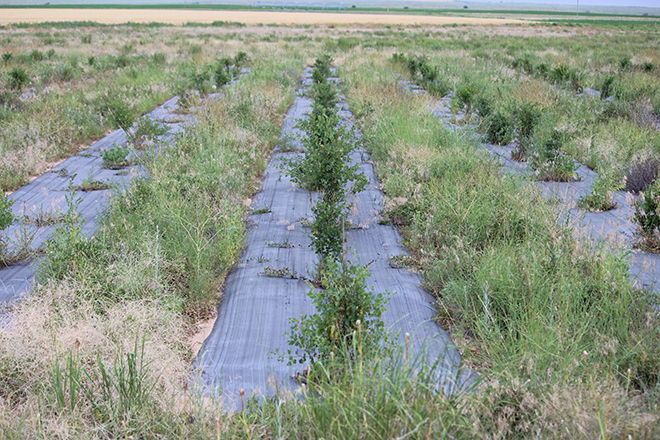
Southeast CO has several hundred thousand acres of CRP scattered through its dryland farm country. More often than not, these CRP fields offer quail little more than nesting cover, with most fields consisting almost exclusively of grass. They tend to be deficient in bare ground, forbs, and woody cover.
Habitat partners in southeast CO have been capitalizing on the huge potential of CRP as quality habitat for bobwhite quail, pheasants, and lesser prairie-chickens. Field by field we’ve been working to improve the quality of CRP in two ways.
The first approach is to encourage landowners to enroll in Continuous Conservation Reserve practices which develop good bobwhite quail habitat, such as Habitat Buffers for Upland Birds, and Pollinator CRP. Both of these practices require seed mixes and management that favor diverse stands of premium quail forbs and grasses.
With the addition of a shrub component, the makings are there for excellent bobwhite habitat. In recent years we’ve been achieving that by offering landowners recommendations and incentives to include four-wing saltbush seed in their plantings.
The second place in CRP where we have been focusing our efforts is with mid-contract management. In Colorado, CRP owners are required to disk, interseed, graze or hay CRP during the middle of their 10 year CRP contract.
Through mid-contract management, there is a huge opportunity to improve bobwhite habitat, if both a disking and interseeding practice are completed. The disking is needed to prepare the seed bed for the interseeded forbs and shrubs. It also has the important benefits of reducing the density of grasses in the stand, which often results in having taller, more robust, and bunchier grasses.
A third benefit is the increase in bare ground, which allows places for annual forbs to grow and increases ease of travel for quail. The interseeding improves the stand by adding woody cover and forbs to CRP fields that lack them.
Our local PF & QF biologists have worked diligently to encourage landowners to consider disking and interseeding in fields when it would offer the best grass stand improvement for wildlife. Local Pheasant’s Forever Chapters purchase four-wing saltbush seed for projects that otherwise wouldn’t have shrub seeds in the mix.
Colorado Parks and Wildlife also helps encourage this kind of work in some areas by offering to pay for disking and interseeding work that goes above and beyond what the landowner’s CRP contract requires.
The shortgrass country in southeast Colorado also offers huge opportunity for the more “open ground loving” scaled quail. Loafing coverts are in especially short supply in the buffalo grass and blue gramma grass pastures.
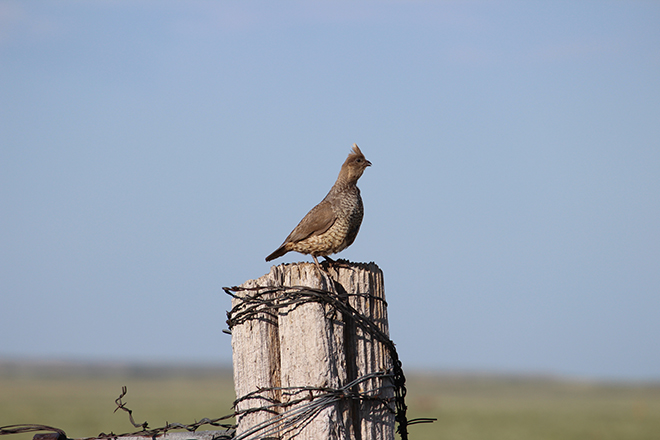
In most cases, the only loafing coverts available are farm machinery and old junk vehicles.
Unfortunately, we find it difficult to get most woody species such as plums and sumacs established in the tight soils of our shortgrass prairie. Mother nature does offer us an excellent option though.
The cholla cactus is a magnificent plant, which establishes easily, doesn’t cost any money, can be established by planting broken chunks of it in the ground, doesn’t need to be protected from cattle, and is loved by Scalies.
Colorado Parks and Wildlife has conducted several planting trials in an effort to figure out the most efficient way to get cholla cactus established. We tried transplanting all different sizes of chollas with their roots. We’ve planted all different sizes of broken pieces without any roots.
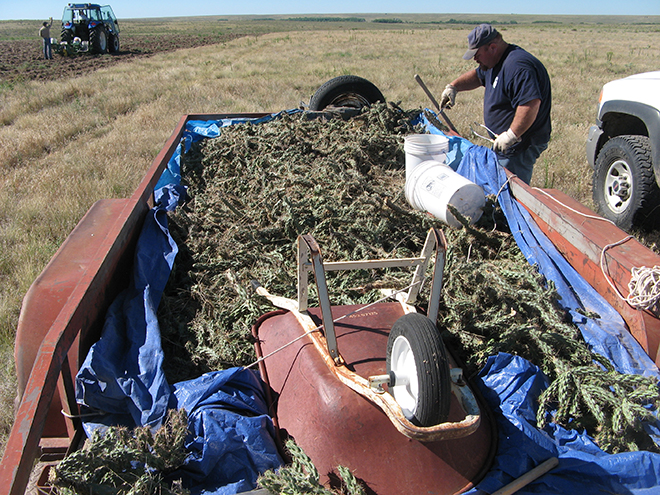
We’ve planted cactus straight into the shortgrass sod, into disked up ground, into several different soil types, and during every month of the spring and summer. We’ve planted it by hand and by tractor/tree planter. We’ve actually even planted the cactus into weed barrier. In most cases, we’ve seen phenomenal success, especially when we pre-treat the planting area by heavily disking it.
What’s our end game with all of this shrub and cactus planting nonsense?
More Quail... More quail throughout southeast Colorado. More quail on our state and federal properties. More quail on private lands enrolled in CPW’s Small Game Walk-in Access Program.
What’s my measure of success? When my two young daughters are old enough to take up the shotgun and follow a pointing dog, they will have more, not less, quail and far more public land quail “honey holes” to take advantage of than we do now.
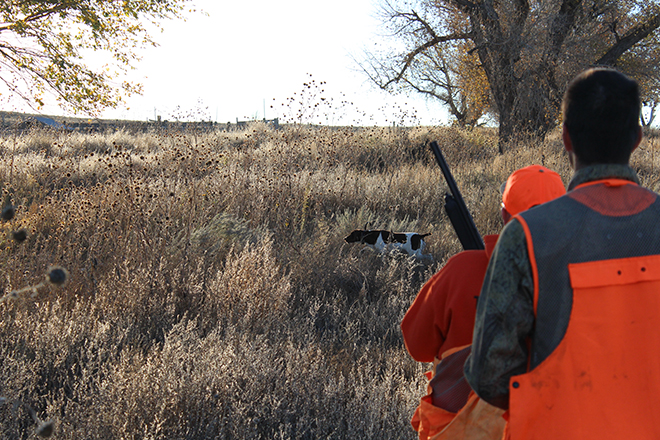
That’s success. And here in the dry southeast Colorado plains, that only is being achieved by the hard work of many passionate habitat partners that are helping make the vision a reality.
Jonathan Reitz is a biologist with Colorado Parks and Wildlife
This story originally appeared in the Winter 2021 issue of Quail Forever Journal. If you liked it and would like to read more great quail content, become a member today!